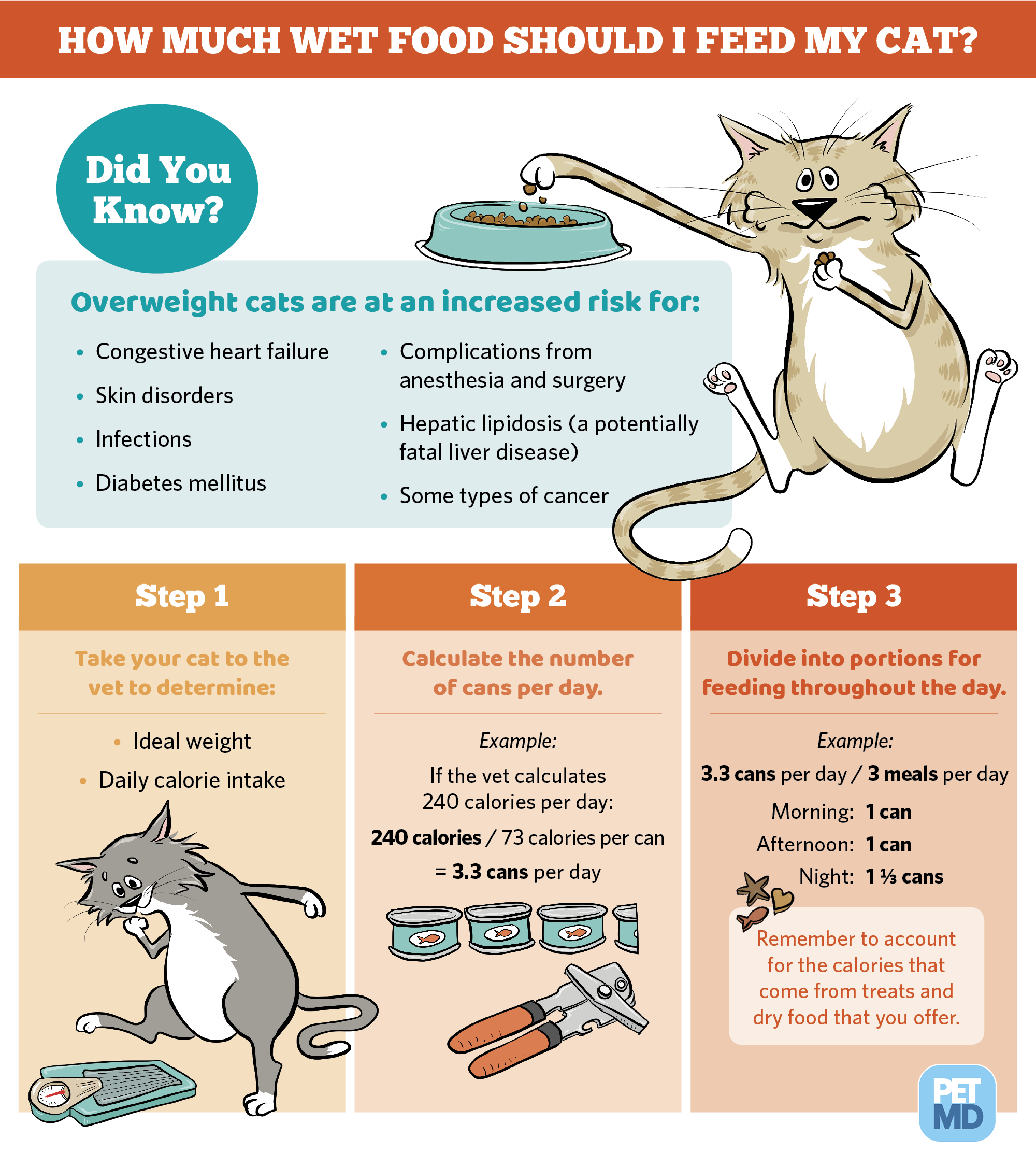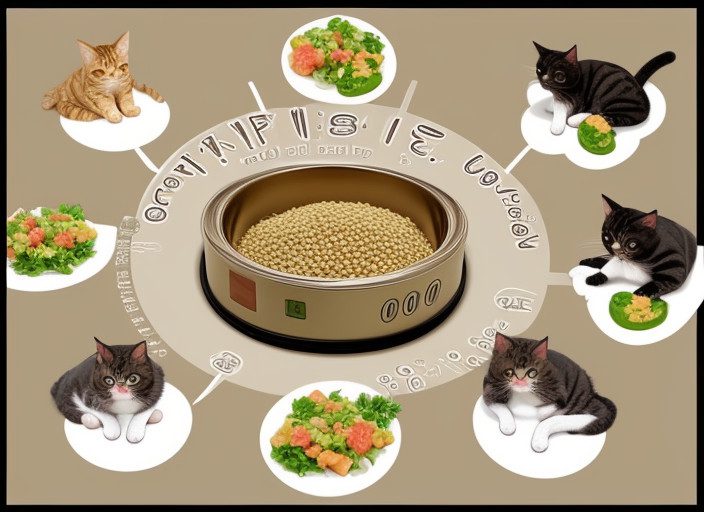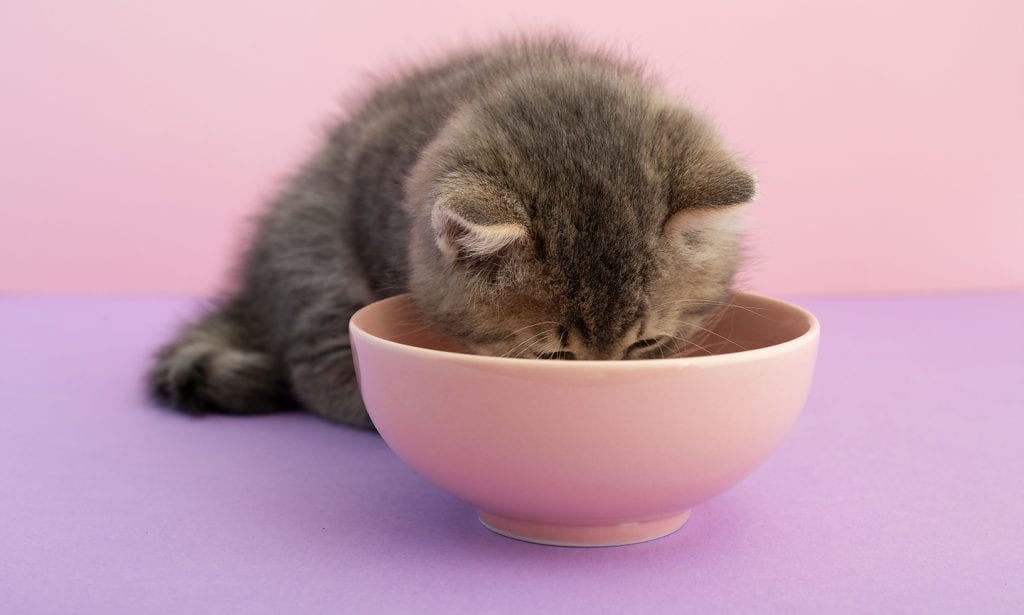To calculate how much-wet food to feed a cat, use a calculator that takes into account the cat’s weight and age. The amount of wet food will vary depending on the cat’s individual needs and dietary requirements.
Introduction (120 words): Determining how much-wet food to feed your cat is an essential aspect of maintaining their overall health and well-being. Unlike dry food, wet cat food provides the necessary hydration cats need to stay properly hydrated. However, determining the right portion size can be confusing at times.
Luckily, there are calculators available that take into account your cat’s weight and age to determine the appropriate amount of wet food for them. These calculators consider the individual needs and dietary requirements of your cat, ensuring they receive a balanced and nourishing diet that supports their overall health. By following these recommended portion sizes, you can ensure that your cat is getting the right amount of nutrients without overfeeding or underfeeding them.

Importance Of Wet Food For Cats
When it comes to feeding our feline companions, it is crucial to provide them with a well-balanced and nutritious diet. Wet food, also known as canned food, plays an important role in meeting their dietary needs. It offers several benefits that not only contribute to their overall health but also promote their well-being.
Nutritional Benefits Of Wet Food
Wet cat food is packed with essential nutrients that cats need to thrive. Unlike dry kibble, which contains less water, wet food has a higher moisture content, which is closer to a cat’s natural prey. This moisture helps to keep your kitty hydrated, preventing issues such as urinary tract problems and kidney disease.
Additionally, the nutrients found in wet cat food are more easily absorbed by their bodies. It contains high-quality proteins, such as chicken or fish, which provide the necessary amino acids for healthy muscle development and maintenance. The addition of vitamins and minerals helps to support their immune system and overall growth.
Another advantage of feeding your cat wet food is its lower carbohydrate content. This is especially beneficial for overweight or diabetic cats, as it helps in managing their weight and blood sugar levels. The lower carbohydrate content also reduces the risk of developing certain health conditions, such as obesity and diabetes.
Hydration And Urinary Health
One of the primary reasons why wet cat food is important is its ability to keep your kitty well-hydrated. Adequate hydration is vital for their overall health and helps to prevent dehydration, especially in warmer climates or for cats that do not drink enough water.
The higher moisture content in wet food promotes healthy urinary function and helps to reduce the risk of urinary tract infections and other urinary issues. This is particularly crucial for cats, as they have a natural tendency to develop urinary health problems, which can lead to discomfort and pain.
To ensure your cat’s urinary system remains in good health, feeding them wet food regularly is recommended. The increased moisture content in wet food encourages more frequent urination, which helps to flush out any toxins or bacteria present in the urinary tract.
In conclusion, including wet food in your cat’s diet offers numerous benefits, including nutritional advantages and improved hydration. By providing your feline companion with wet food, you are supporting their overall health, and urinary well-being, and ensuring they receive the essential nutrients they need to thrive.


Factors To Consider Before Feeding
Before determining how much-wet food to feed your cat, it’s crucial to consider various factors to ensure you meet their nutritional needs. By taking into account your cat’s size and weight, as well as their activity level and age, you can provide the appropriate portion to support their overall well-being.
Cat’s Size And Weight
A crucial factor in determining the right amount of wet food for your cat is their size and weight. Smaller cats will require less food compared to larger ones. Use your cat’s weight as a guide to calculate the appropriate serving size using a reliable cat feeding calculator.
Activity Level And Age
The activity level and age of your cat also play a significant role in determining their dietary needs. Active cats may require more food to sustain their energy levels, while senior cats or those with lower activity levels may need smaller portions to prevent weight gain.


Understanding Cat’s Dietary Requirements
Cats have specific dietary requirements to maintain their overall health and well-being. As responsible pet owners, understanding what these requirements are and how to provide them is crucial. In this article, we will delve into the key aspects of a cat’s diet, including protein and amino acids, as well as essential fatty acids.
Protein And Amino Acids
Protein is an essential component of a cat’s diet as it plays a crucial role in their overall growth and development. Cats are obligate carnivores, which means they primarily require animal-based protein as their main dietary source. Including enough protein in a cat’s diet is important for maintaining their muscle mass and supporting other vital functions in their body. Protein provides the necessary amino acids that cats cannot produce internally and therefore must obtain from their diet.
Amino acids are the building blocks of protein and are crucial for a cat’s health and well-being. There are 22 different amino acids, and cats require specific ones, such as taurine and arginine, in their diet. Taurine, for example, is essential for proper heart function and vision in cats. Without sufficient taurine, cats may develop serious health issues, including cardiovascular diseases and blindness.
Essential Fatty Acids
Essential fatty acids are also an important part of a cat’s diet. Cats require certain omega-3 and omega-6 fatty acids, such as eicosapentaenoic acid (EPA), docosahexaenoic acid (DHA), and arachidonic acid. These fatty acids have numerous benefits for cats, including promoting healthy skin and coat, supporting brain development and function, and enhancing their immune system.
Omega-3 fatty acids, specifically EPA and DHA, are particularly beneficial for cats as they have anti-inflammatory properties. These fatty acids can help reduce inflammation, which is especially beneficial for cats with allergies or joint issues. In addition, arachidonic acid is essential for cats as it plays a vital role in various biological functions, such as maintaining healthy reproductive and gastrointestinal systems.
To ensure that your cat receives the necessary protein, amino acids, and essential fatty acids, it is essential to provide them with a balanced and high-quality diet. This includes feeding them wet food that meets their specific dietary needs. By understanding and fulfilling their dietary requirements, you can contribute to your cat’s overall health and happiness.


Introduction To The Wet Food Calculator
How The Calculator Works
The Wet Food Calculator is a useful tool that helps cat owners determine the appropriate serving size of wet food for their feline companions. By entering specific details such as weight, age, and activity level of the cat, the calculator generates the recommended daily portion, ensuring that the cat receives the right amount of nutrition tailored to its individual needs.
Benefits Of Using A Calculator
- Accurate Portion Control: The calculator provides accurate portion sizes, helping prevent overfeeding or underfeeding, which can lead to obesity or nutrient deficiencies.
- Promotes Health and Wellness: By ensuring cats receive the correct portion of wet food, the calculator promotes overall health and wellness, contributing to a healthy weight and a well-nourished furry friend.
- Convenience: Using the calculator saves time and effort, removing the guesswork from portion control and making feeding your cat a simpler and more streamlined process.
Using The Wet Food Calculator
Entering Cat’s Details
Enter your cat’s weight and age in the designated fields.
Choose the activity level that best describes your cat’s daily routine.
Click ‘Calculate’ to generate the recommended wet food portion.
Interpreting The Results
Review the suggested feeding amounts for your cat based on the input provided.
- Compare the calculated portion to your cat’s current food intake.
- Adjust the serving size as needed for your cat’s health and weight goals.
- Consult with a vet for further guidance on your cat’s dietary needs.


Adjusting Serving Sizes Based On Preferences
For optimal feeding, consider your cat’s wet food preferences to adjust serving sizes accordingly. Use a calculator to determine the right amount. Be mindful of your cat’s needs for a balanced diet and overall health.
Considering Cat’s Tastes
Health Conditions That Influence Feeding
Adjusting Serving Sizes Based on Preferences When considering how much wet food to feed a cat, it’s crucial to adjust serving sizes based on preferences. Cats have unique tastes, so their preferences should be taken into account. Health conditions can also impact how much a cat should consume. Here’s how to navigate these factors:
Considering Cat’s Tastes
Cats have preferences for different textures and flavors. Observe your cat’s response to different food types. Adjust serving sizes based on your cat’s favorite choices.
Health Conditions That Influence Feeding
Consult with a veterinarian for specific dietary recommendations. Cats with health issues may require specialized diets. Monitor your cat’s weight and overall health to adjust accordingly. In summary, understanding your cat’s tastes and any health conditions is vital in determining the appropriate serving sizes of wet food. Customizing their diet ensures they receive the nutrition they need to stay healthy.
Monitoring And Adjusting Feeding Habits
To determine the appropriate amount of wet food to feed your cat, utilizing a calculator helps in monitoring and adjusting feeding habits efficiently. The calculator takes into account factors such as weight, age, and activity level, ensuring optimal nutrition for your feline companion.
Signs Of Overfeeding
Signs Of Underfeeding
Monitoring and Adjusting Feeding Habits When it comes to feeding our feline friends, it’s important to find the right balance to keep them healthy and happy. Monitoring and adjusting their feeding habits is crucial to ensure they are getting the right amount of wet food. Overfeeding can lead to weight gain and obesity, while underfeeding can leave them malnourished and weak. By paying attention to their signs, we can make necessary changes and provide them with the optimal amount of wet food they need.
Signs Of Overfeeding
Overfeeding can have detrimental effects on your cat’s health. It’s important to look out for the following signs, which may indicate that you’re overfeeding your furry friend:
- Rapid weight gain or obesity
- Difficulty in grooming
- Reduced energy levels
- Increased thirst and urination
- Digestive issues such as vomiting or diarrhea
If you notice any of these signs, it’s time to reassess your cat’s feeding habits. Consult with your veterinarian to determine the appropriate portion sizes for their needs and make adjustments accordingly.
Signs Of Underfeeding
Underfeeding can leave your cat lacking essential nutrients and energy. Look out for these signs, which may indicate that your cat is not getting enough wet food:
- Weight loss or visible ribs
- Loss of muscle mass
- Dull coat and dry skin
- Weakness or lethargy
- Increased begging or scavenging behavior
If you spot any of these signs, it’s important to increase their wet food intake to ensure proper nourishment. Again, consulting with your veterinarian is crucial to determine the appropriate portion sizes based on their age, weight, and activity level. Remember, monitoring and adjusting your cat’s feeding habits is an ongoing process. Regular weigh-ins and observation of their behavior and physical condition will help you provide the optimal amount of wet food for their needs.
Consulting With A Veterinarian
Consulting with a veterinarian for advice on a wet food calculator for feeding your cat is essential for maintaining their health. By using a dedicated calculator, you can ensure that your cat gets the right amount of wet food, tailored to their individual needs, promoting a balanced diet and overall well-being.
When it comes to the optimal feeding of your feline companion, consulting with a veterinarian is paramount. A veterinarian can provide personalized recommendations based on your cat’s individual needs, ensuring they receive the right balance of nutrients for their overall health and well-being.
Importance Of Veterinary Advice
Veterinary advice plays a crucial role in determining the appropriate amount of wet food to feed your cat. Consulting with a veterinarian helps ensure that your cat’s specific dietary requirements are met, taking into account factors such as age, weight, activity level, and any underlying health conditions.
Customized Feeding Plans
Veterinarians can develop customized feeding plans tailored to your cat’s unique needs. These plans consider various aspects, including portion sizes, frequency of feeding, and the selection of suitable wet food options to support your cat’s overall health and dietary preferences.
Frequently Asked Questions On How Much Wet Food To Feed A Cat Calculator
Is 2 Cans Of Wet Food A Day Enough For A Cat?
Yes, 2 cans of wet food a day is generally enough for a cat. Wet food provides moisture and essential nutrients. However, a cat’s dietary needs may vary based on age, weight, activity level, and health. It’s best to consult your veterinarian for personalized feeding recommendations.
How Much Wet Food Should A 10 Lb Cat Eat Per Day?
A 10 lb cat should eat about 2. 5 to 3. 5 ounces of wet food per day divided into 2 meals.
Is 6 Oz Of Wet Food Enough For A Cat?
Yes, 6 oz of wet food is generally enough for a cat to meet their daily nutritional needs.
Is 1 Cup Of Cat Food Too Much?
No, 1 cup of cat food is not too much. It is a suitable amount for an average adult cat’s daily meal. Remember to consider your cat’s individual needs and consult with your veterinarian for specific dietary recommendations.
How Much Wet Food Should I Feed My Cat Daily?
You should generally aim to feed your cat 2-4 servings of wet food per day.
Conclusion
To sum up, determining the right amount of wet food to feed your cat is essential for their overall health and well-being. By using a reliable wet food calculator, you can easily ensure that your furry friend receives the appropriate portion size based on their age, weight, and activity level.
Remember, maintaining a balanced diet and following the guidelines provided by your veterinarian is crucial for keeping your beloved pet healthy and happy.

Pingback: Can Kittens Safely Consume Adult Cat Food? Unveiling the Facts - Comprehensive Guide to Pet Care